Review of the smartphone ASUS ZenFone 3

Autumn and winter is the traditional time of rolling out most of the new gadget building. The new smartphone ASUS - ZenFone 3 (ZE552KL), notably different from the models of the previous line, was no exception.
Brief explanation: the number 3 in the name of the smartphone indicates the ordinal number of the ruler - ZenFone, ZenFone 2, ZenFone 3. However, in the previous lines there were models ZenFone 4, 5 and 6, in which the numbers indicated the size of the diagonal in inches.
Specifications
OS : Android 6.0, ASUS ZenUI 3.0 Graphic Shell
Processor : 64-bit Qualcomm Octa-Core Snapdragon 625 @ 2.0 GHz
Graphics : Adreno 506
Display : 5.5 inches, 1920x1080, IPS, Gorilla Glass 2.5D
Memory : 4 GB LPDDR3
Data storage : 32 GB / 64 GB
Memory card : Micro SD up to 256 GB
Battery : 3000 mAh (non-removable)
Cameras :
- front 8 megapixel, f / 2.0 aperture
- primary 16 megapixel f / 2.0 aperture
Video :
- 4K video recording
- taking photos during video recording
- three-axis electronic stabilization
Audio : Five Speaker, ASUS SonicMaster 3.0 Technology
Wireless :
- 802.11b / g / n / ac
- Bluetooth V 4.2
- Wi-Fi direct
Navigation : GPS / A-GPS / GLONASS / BDSS
SIM :
- SIM 1: 2G / 3G / 4G Micro SIM
- SIM 2: 2G / 3G / 4G Nano SIM
Sensors :
- acceleration sensor
- compass
- gyroscope
- proximity sensor
- Hall Sensor
- light sensor
- RGB sensor
- infrared light sensor
Connectors :
- USB Type C 2.0
- 3.5 mm audio
Color : dark blue / white / golden
Dimensions : 152.59 x 77.38 x 7.69 mm
Weight : 155 g
AnTuTu specifications











Appearance and equipment
The smartphone comes in a compact modest box, strictly to the size of the device itself. Included are a USB cable, charging and headset with additional interchangeable ear cushions of different sizes.

The design of the smartphone is designed in today's fashionable style. Both sides are almost entirely covered with Gorilla Glass 2.5D glass panels, which are slightly rounded at the edges. There is a silver edging along the panels, creating a visual accent. The phone is so dark blue that it seems black. In bright light, under the glass of the back panel, the corporate concentric pattern of the Zen line is visible.


The ends are also made rounded, so a rather wide, but thin device lies comfortably in the hand, without cutting into the palm.
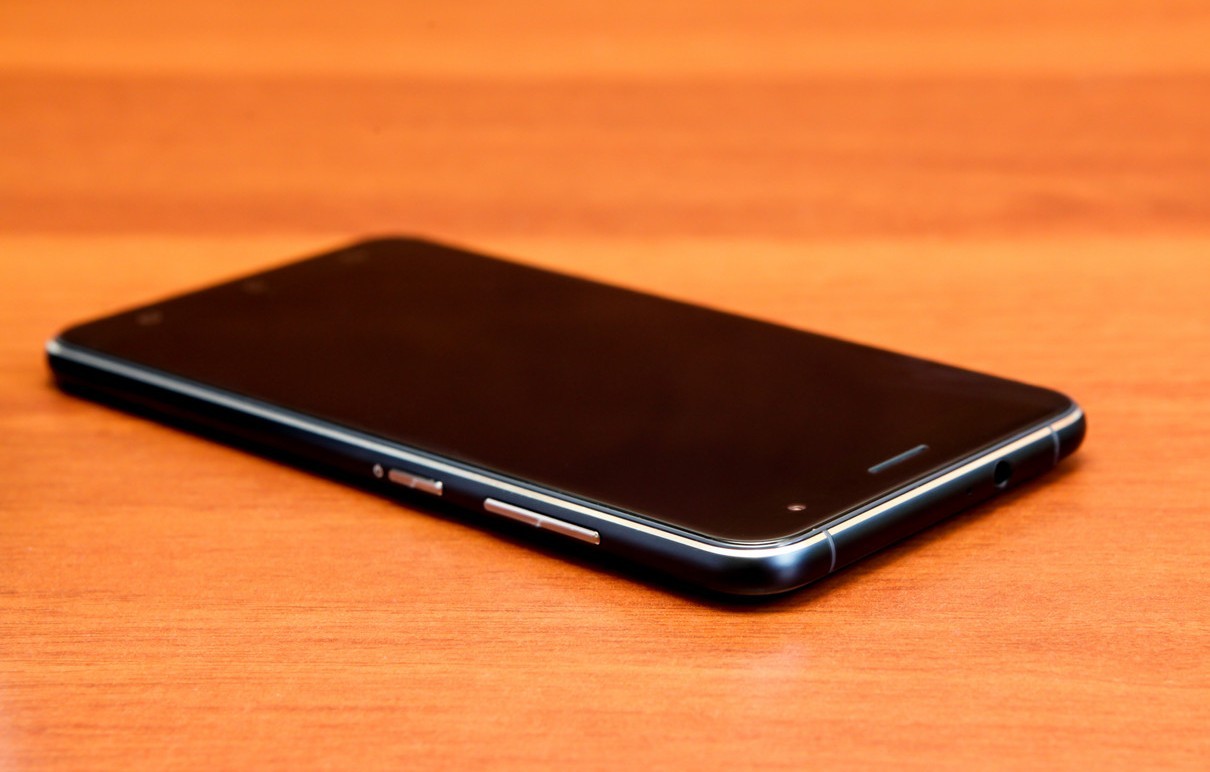
The volume and power buttons are on the right side, comfortably lying under the fingers of his left hand.
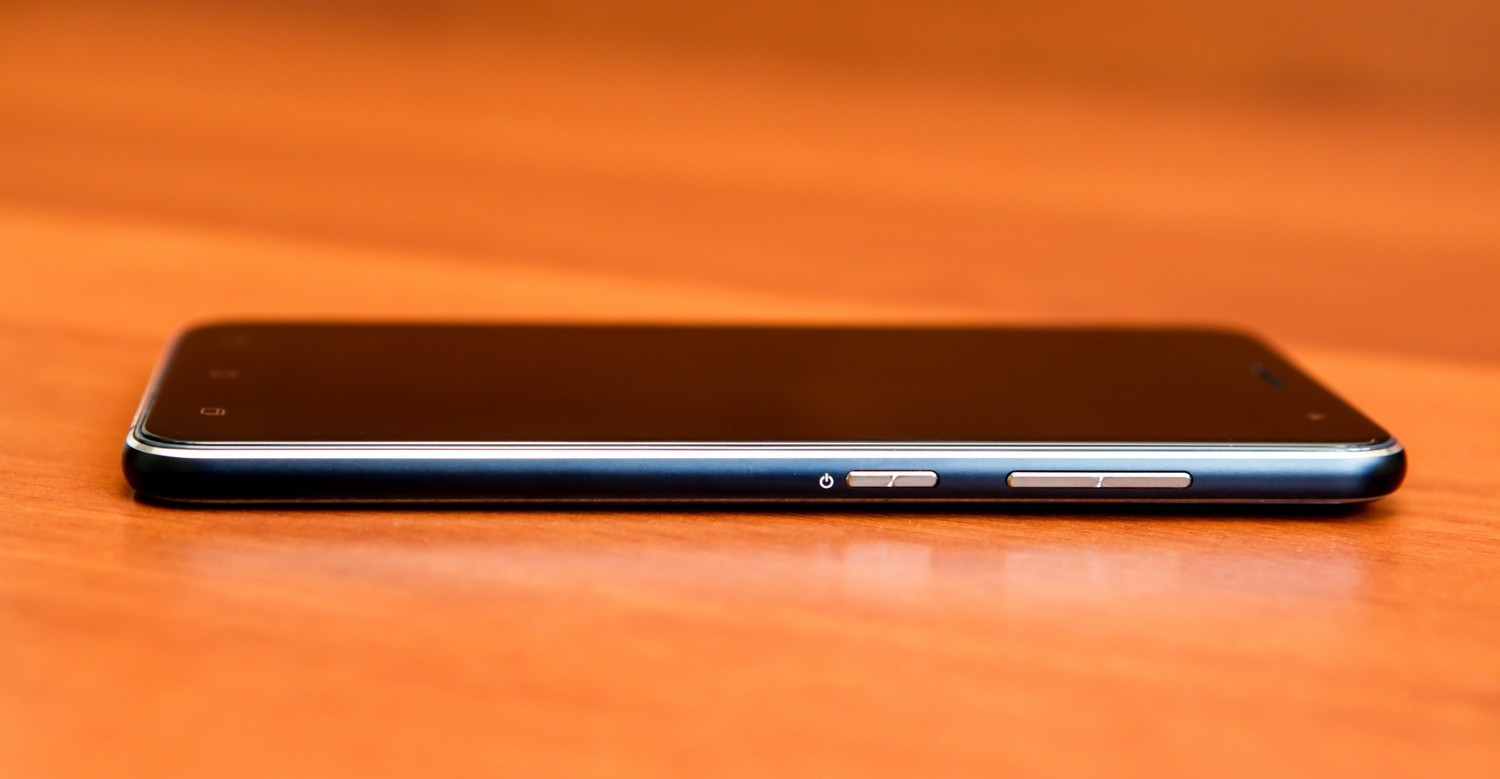

At the top there is an audio connector and one of the microphones, at the bottom there is a second microphone, a USB Type C 2.0 connector and a speaker grid.
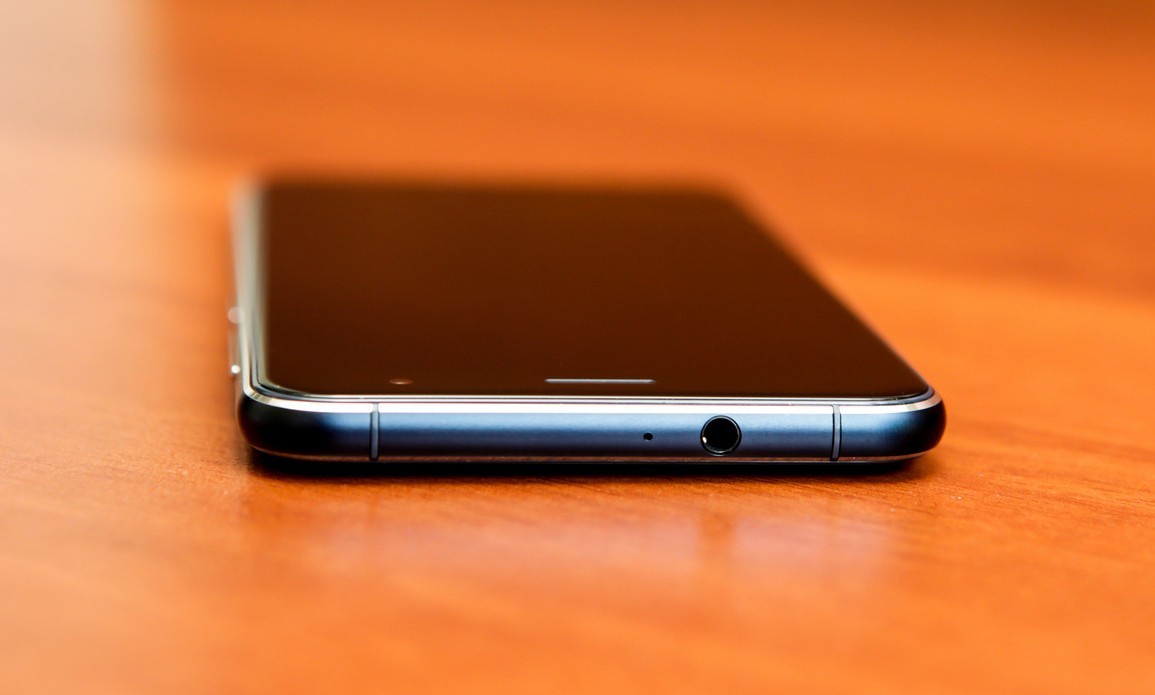
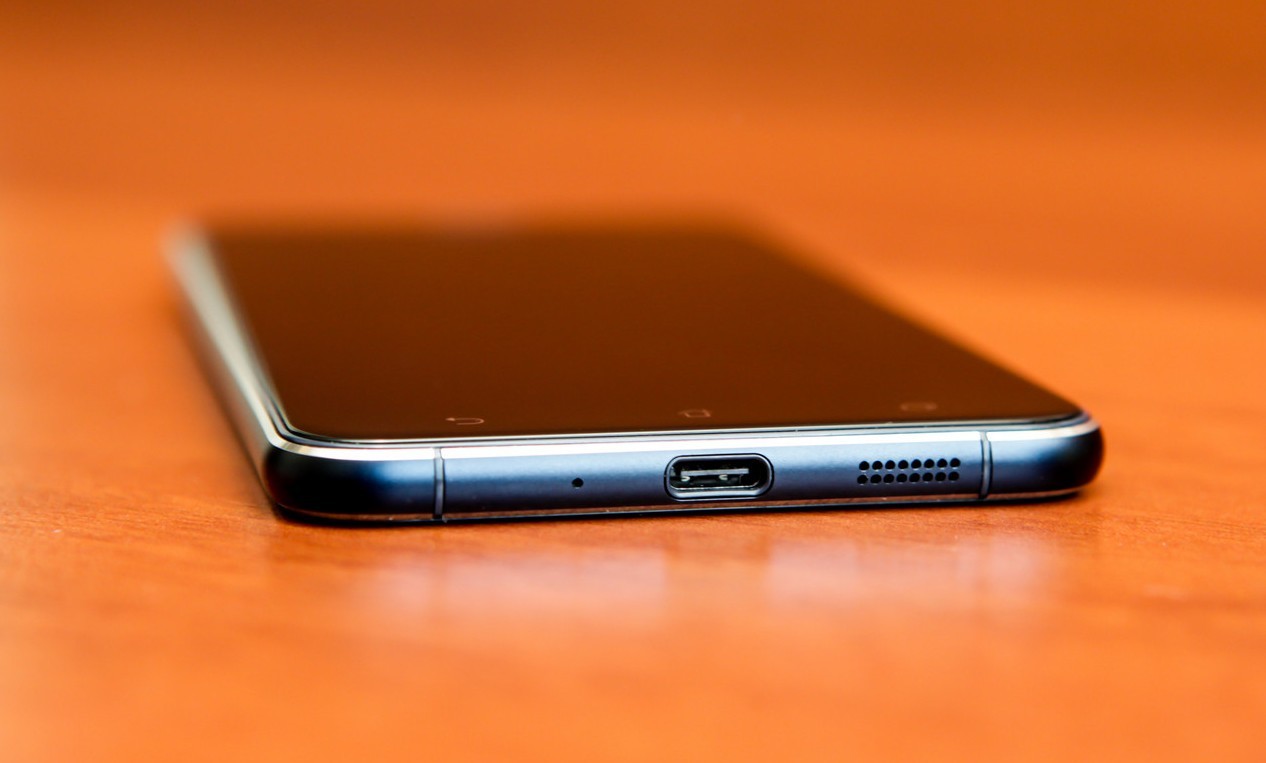
The camera module protrudes above the back panel surface. For some, this may be a drawback, they say, the purity of the lines is broken. But such a construct has a slight advantage over the ideal “glass sandwich”: an additional 1.5 mm slightly helps to take a rather thin sleek smartphone from the table, it is easier to hook it with your fingertips. Still, the width of the ends of the aluminum body barely exceeds 6 mm. The camera itself is protected by a sapphire crystal.

The laser focusing sensor is to the left of the camera, and to the right is a two-color flash for more natural color reproduction during portraits. And under the camera is a fingerprint sensor. This is another tribute to fashion - now to unlock the phone, you can not touch the screen at all, it’s enough to hold it in one hand, press the power button and put your finger on the bottom of the sensor. Very comfortably. By the way, in addition to the fingerprint, you can assign a PIN or graphic key.

ZenFone 3 will be available in three colors (celadon will not be delivered yet):

Display
The impression of the picture is very pleasant. Full HD resolution at such a diagonal gives a perfectly smooth picture, not the slightest pixel. IPS-matrix has a high color quality and wide viewing angles. The maximum brightness reaches 600 nits, so that in bright light there is no discomfort. Curiously, even rounding around the perimeter of the protective glass contributes to the perception of the picture - it seems that the image occupies almost the entire width of the smartphone, that is, the side margins are not so noticeable. In general, the display occupies 77.3% of the area of the smartphone.
As mentioned above, Gorilla Glass 2.5D is used as a protective glass. As befits every self-respecting smartphone, ZenFone 3 has an effective oleophobic coating and supports glove control. The latter is especially relevant in connection with the approach of winter.
Photo and video shooting
The main camera of the smartphone is based on the Sony IMX298 16-megapixel matrix (according to the AnTuTu benchmark, the camera resolution is 12.2 megapixels). Maximum f / 2.0 aperture. The lens is covered with sapphire glass, so you can not be afraid to scratch the camera, putting the smartphone on the table.
Thanks to the laser module, the camera is able to focus very quickly, the manufacturer claims as much as 0.03 seconds. I fully admit that when shooting cars, the camera always reacted immediately. By the way, for the laser sensor there is another useful application as a laser range finder:

The quality of the images in ZenFone 3 is very decent. The HDR button is displayed on the screen, which allows you to quickly enable / disable this mode, often allowing you to make your photos more spectacular with a large difference in brightness.
Sample Snapshots







HDR mode by default:

HDR is disabled, focusing on the shadow side of the machine:




Macro:









HDR mode by default:

HDR is disabled, focusing on the shadow side of the machine:




Macro:

Another important feature of the camera is the optical 4-axis stabilizer, which allows to compensate for tremor and shaking. Stated that this allows you to increase the shutter speed up to 4 steps greater than that at which the image would be sharp without a stabilizer. But when shooting video, optical stabilization is no longer used. Instead, the so-called electronic is used - the algorithm determines the presence of jitter and compensates for it in three axes. Apparently, for this purpose, the redundancy of the resolution of the matrix itself is used. But ZenFone 3 can shoot video in 4K. And in order to fit more memory in memory, the HEVC encoding format is used .
Video examples: 4K , Full HD , Full HD 60 FPS .
The front camera - 8 MP - also provides quite good quality. By default, the portrait enhancement function is enabled, which implies post-processing: tone correction and skin smoothing, even a slight increase in the eyes and a decrease in the cheeks.


Photo sources: https://yadi.sk/d/L1VCeB5Vv3xsD .
mobile connection
ZenFone 3 can be equipped with either two SIM-cards, or one SIM-card and a memory card:

If you decide to install two SIM-cards, then one should be a micro format, and the second - nano. However, only one of the SIMs can be connected to 3G WCDMA / 4G LTE, the second is in standby mode.
The maximum data download speed via mobile Internet can reach 300 Mbit / s, and via Wi-Fi - up to 433 Mbit / s.
Software
ZenFone 3 is running Android 6.0. The new version of ZenUI is used as the graphic shell. You can download numerous free and paid applications.

As for additional software, here is a standard set of ASUS mini-tasks.


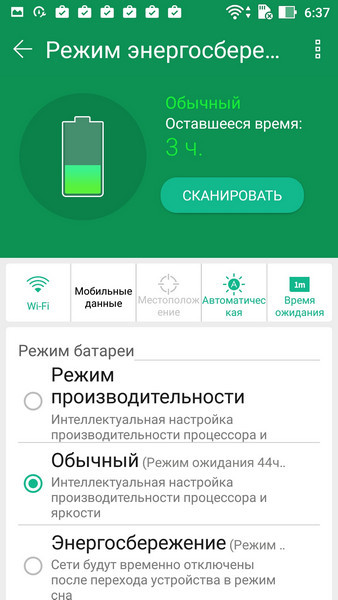


Performance and work experience
The smartphone is equipped with a 64-bit eight-core Qualcomm Snapdragon 625 processor with significantly reduced power consumption. The Adreno 506 chip integrated into the processor is responsible for the graphics. The RAM capacity is 4 GB, the internal memory capacity is 32 or 64 GB. You can also insert a memory card up to 256 GB.
ZenFone 3 works very quickly both in terms of heavy programs and in “applied” situations: excellent touch responsiveness, almost instantaneous triggering of a fingerprint sensor. The battery also charges quickly, in the first five minutes a sufficient level is provided so that you can talk for two hours. True, the battery is not a record capacity - 3000 mAh. However, during load testing, the battery capacity dropped from 98% to 20% in 12 hours and 46 minutes.
Benchmark Results
PC mark


3D mark


GFX bench




Geekbench



Vellamo

AnTuTu





3D mark


GFX bench




Geekbench



Vellamo

AnTuTu



Conclusion
The new smartphone has made a favorable impression on me. Pleasant "glass" design, high performance, good capabilities of both cameras, convenient fingerprint sensor under the index finger on the back side, allowing you to instantly unlock the phone with one hand, fast charging and a good duration of work. ZenFone 3 refers to the average price segment, in design and quality of finish is not inferior to much more expensive devices.
The recommended retail price is 23 990 rubles.
